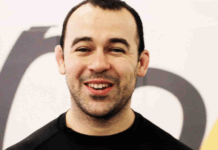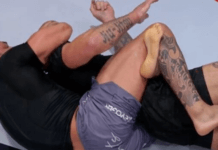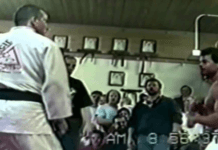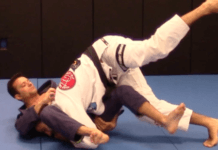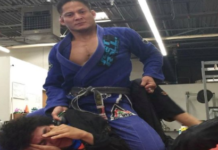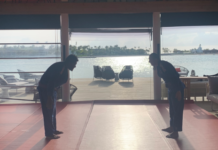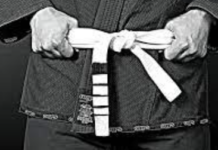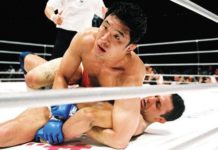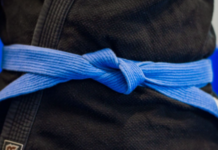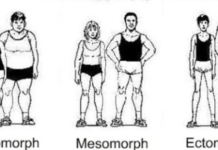Brazilian Jiu-Jitsu is a beautiful sport, full of interesting moves and techniques. However, we often forget, that jiu-jitsu is also full of for example various symbols. There is, of course, Shaka Sign. But have you ever wondered why the triangle is used as a symbol and logo in BJJ so often? You will find the answer below.
Triangle Symbol and BJJ
Over the years, the relationship between the triangle and BJJ has grown into many myths and legends. However, the truth is not that complicated. Below you will find the answer to the question of why the triangle is used as a symbol and logo in BJJ so often in a nutshell. Beneath there is also more official origin of the triangle as a symbol and logo in BJJ.
In nutshell
The short answer is that the triangle represents 3 of the most important aspects of BJJ. These are mind, body, and spirit. Only by balancing these 3 things like in triangle, greatness in jiu-jitsu can be achieved. Others also add that the triangle got a stable base, no matter which way is turned it is a stable shape. And a stable base is really important in Brazilian Jiu-Jitsu. Hence the relationship between these two things.
There is also conviction, that the popularity of the triangle as a logotype in BJJ results from the triangle choke being by many considered as signature choke for jiu-jitsu. However, such interpretations could be multiplied indefinitely. That’s why if you are looking for more official explanations check below.
Origin of the triangle as a symbol and logo in BJJ
The triangle was not chosen to be a symbol and logo in BJJ accidentally. This shape was chosen and popularized by the Gracie Family. Already at the beginning of BJJ, Carlos and Helio chose the triangle as a symbol of jiu-jitsu because it represented the firm and stable base that all practitioners of the BJJ should have. The three vertexes of the triangle represent the three components of what is known as Gracie jiu-jitsu. These are mind, body, and spirit. They all merge and together define a Brazilian Jiu-jitsu practitioner.
Rickson Gracie extended this symbolism and added a few things to this explanation of the triangle relationship with BJJ. He said that the triangle will always be stable and strong, no matter what side it is pushed to. No matter its position, the triangle will always be steady. And this is a crucial understanding of fighting strategies in Brazilian Jiu-Jitsu as well. BJJ always center around three points of contact, meaning that no matter what position you will be in, you will always be able to come to your opponent.
What Rickson Gracie says about the triangle symbolism
“In Jiu jitsu, the triangle has a deep meaning. It comes from my father, Helio Gracie, and my uncles, and from my own efforts to develop the art. We realized that there is a kind of three point base in every aspect of jiu jitsu. The triangle reflects this meaning of a perfect base. For example, if you mount your opponent, his body will be one point and your knees will the other points. There are always three points of contact. This doesnt not mean you cannot be moved, rather it means that the ways you can be moved are predictable. The fact that they are predictable means you can find an extra element to create a new third point whenever you need to.”
“If you imagine a perfect triangle in three dimensions – in pyramid form – you can see how you can push it to either side, and it will always be stable. It regains its solid position every time. The application of this concept works that way. When you are mounted on your opponent and have three points of contact, he can move you around and you will easily find your third point again. No matter how or where he moves you, you will be able to find his third point of support.”
In addition
As a source of the start of using the triangle as a symbol and logo in BJJ, many also recognize the picture of Carlos and Helio Gracie in a demonstration of Jiu Jitsu, which was used on the cover of the first instructional Jiu Jitsu book, written by Carlos and published in 1948 by Pongetti. In this picture, their bodies are arranged so that they resemble a triangle.

